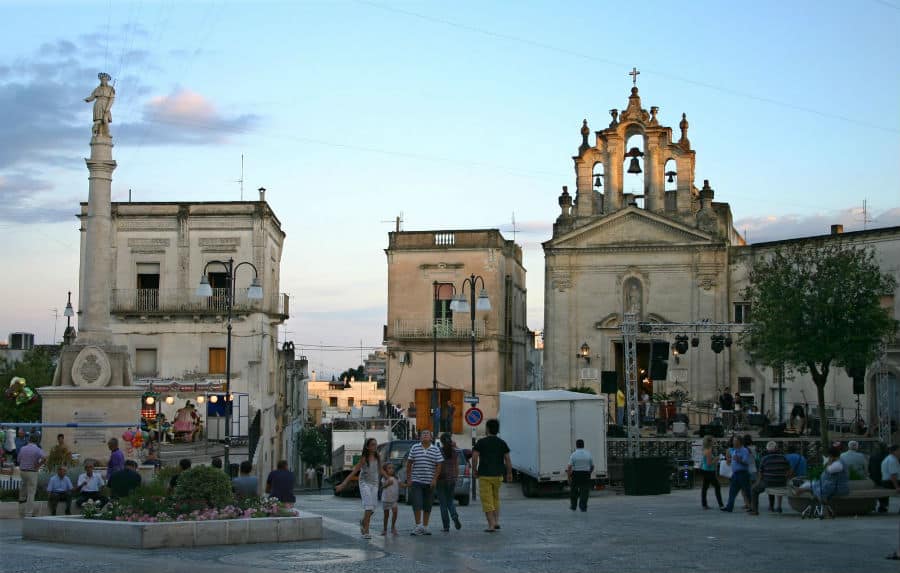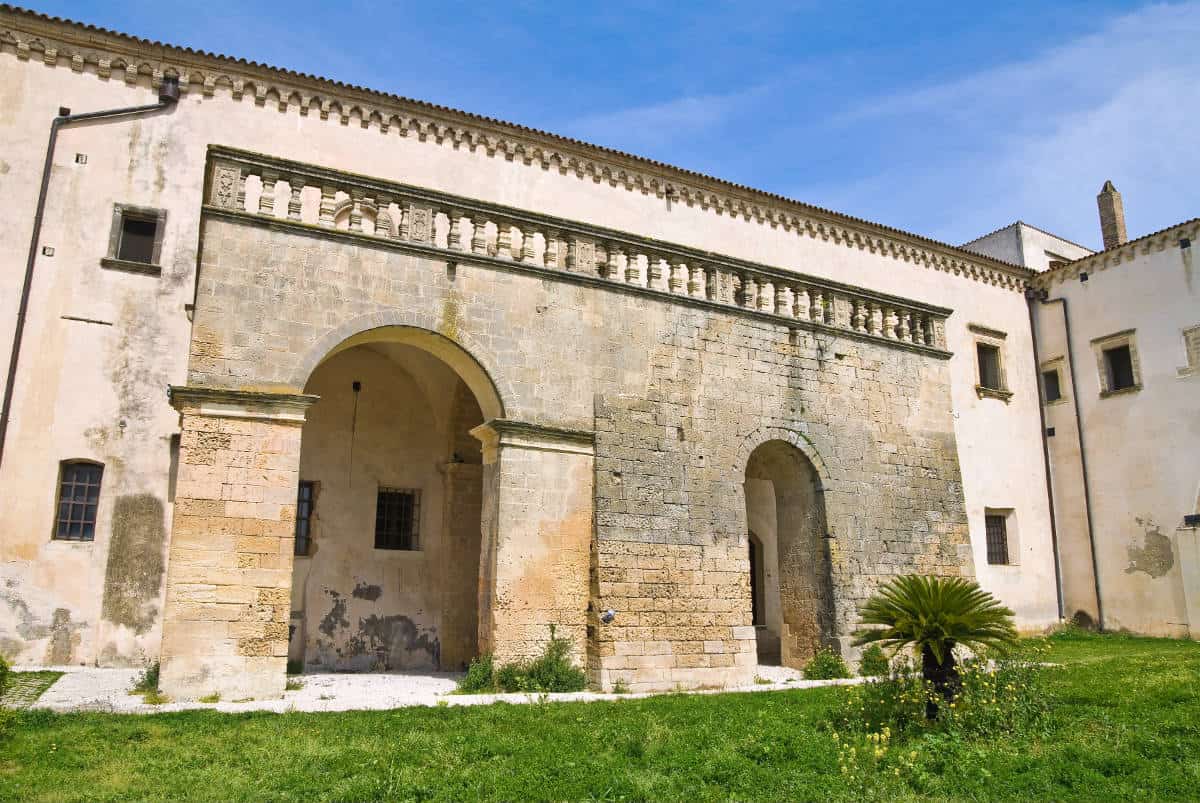Montescaglioso is an important historic and cultural known as the City of Monasteries for the presence of four monastic ensembles, among which stands out the Abbey of San Michele Arcangelo.
Certainly deserve a visit the Mother Church, the Norman Castle and the Sanctuary of the Madonna of the Murgia, the most important church of the rocky heritage of Montescaglioso.
Tradition and taste characterize the cuisine of Montescaglioso, one of the "city of oil" lucane.
It is no coincidence that on the table montese never lacks the extra virgin olive oil DOP lucano, extracted mostly from the pressing of the olive Maiatica Ferrandina, which makes it soft and fruity flavor, used in most typical dishes.
Excellent also the production of products in oil such as tomatoes, aubergines and artichokes.
The rich menu includes the typical homemade pasta, in which orecchiette and cavatelli dominate, beyond sheepmeat and goatmeat grilled, and then the so-called "Cialledda", a soup based on bread, onions, olive oil, pecorino cheese and pepper. All of this, obviously, watered by excellent local wine, especially on the occasion of the enogastronomic "In Vino Veritas".
History
The first settlements in the territory of Montescaglioso date back to the VII century B.C. the entire area, closely linked to the city magnogreca Metaponto (founded by Greek settlers to half of the VII century B.C. in the vicinity of the mouth of the Bradano river), lives of intense exchanges and contacts with the Greek centers of the Ionic coast.
With the decadence of Metaponto in roman times and the progressive silting up of the port of the Greek city, Montescaglioso assumed an increasingly important role in the surrounding territory. It is likely that part of the population of Metaponto, forced to abandon the city and to disperse in the neighboring towns after siding with Hannibal in 207 BC, during the second Punic war, is transferred at Montescaglioso.
The Roman phase of the city belongs a mosaic that attests to the presence in Montescaglioso a republican judiciary and a large public building. A telamone in tuff coming from another public palace of Montescaglioso is conserved in the Museo nazionale della Magna Grecia di Reggio Calabria.
Become a Byzantine stronghold, after 1000 it was conquered by the Normans and welcomed an important Benedictine community with the Norman count Rodolfo Maccabeo. Following Frederick II assigned to Manfredi.
Under the Angevins and the Aragonese fief of various lords: del Balzo, d'Avalos, Orsini, Loffredo, Grillo and Cattaneo.
Since the beginning of the twentieth century the town experienced the presence of the Italian Socialist Party, respecting in this sense the tendency lucana that in the early years of the Twentieth Century saw take root ideals linked to the proletariat internationalism of Marxist.
In spite of the fascist regime, and despite the country stay with the lookout of the Navy, the activities of parties antifascists has always been active and this is evidenced by the fact that the announcement of the arrest of Benito Mussolini, which occurred on 25 July 1943, following the approval by the great council of fascism of the motion of censure proposed by Dino Grandi, the population of the country reacted with violent demonstrations against the podestà Francesco Locantore until, on 19 September, to his killing, although there were in the country the Canadian troops arrived that same day.
Immediately after the fall of the regime the political activity of the country shooting with force and returned to be felt those discontent present always in the minds of citizens, linked to usurpations of state owned lands and to the presence of the large landed estates with its relations of production based on abuse.


















